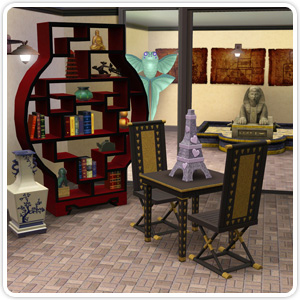
The Art of Temple Etiquette (and How I Almost Messed It Up)
Bali’s temples are magical, no doubt. But let me save you from the awkwardness of showing up unprepared. The first time I visited Pura Besakih (the Mother Temple), I was clueless. I rocked up in shorts and a tank top—big mistake. Luckily, a kind local lent me a sarong, which is basically required attire for visiting temples. Since then, I’ve always carried one in my bag when exploring Bali. Pro tip—oh wait, I wasn’t supposed to say that, but seriously, pack a sarong!
Another thing about temple visits: you’ll often see beautiful offerings (called canang sari) placed on the ground or steps. I made the rookie mistake of stepping over one because I wasn’t paying attention. Whoops. Turns out, it’s super disrespectful. Lesson learned: watch where you walk, and don’t be that tourist.
Traditional Balinese Dance: More Than Just Entertainment
I went to my first Balinese dance performance at Ubud Palace, and let me tell you, it’s not just a show—it’s like stepping into a storybook. Each gesture, expression, and costume has meaning, and the dancers are insanely skilled. I didn’t get it at first—why were their eyes darting back and forth so dramatically? But after chatting with a local guide, I learned those eye movements (called seledet) are key to expressing emotion in the story.
If you want an authentic experience, skip the super-touristy spots and try smaller venues like Desa Batubulan. It’s less crowded, and honestly, the vibe feels more personal. Oh, and show up early! The front-row seats fill up fast, and trust me, it’s worth being close enough to see every intricate hand movement.
Festivals: Timing Is Everything
One of the coolest things about Bali is how many festivals happen throughout the year. Ever heard of Nyepi, the Balinese Day of Silence? It’s hands-down one of the most unique cultural experiences I’ve ever had. Imagine an entire island shutting down—no cars, no flights, no Wi-Fi (gasp!). At first, I was panicked—what would I do all day? But honestly, it turned out to be one of the most peaceful days of my life.
If you’re visiting during Nyepi, plan ahead. Stock up on snacks because stores will be closed. And while you’re at it, catch the Ogoh-Ogoh parade the night before. It’s a wild mix of colorful demon statues, fire, and drums—it’s like Halloween but on steroids.
Food That Tells a Story
Balinese food isn’t just delicious; it’s a cultural experience. You’ve got to try babi guling (suckling pig) at least once. I had my first taste at a small warung in Gianyar, and let me tell you—it was life-changing. The crispy skin, the tender meat, the spices... okay, now I’m drooling.
But here’s the thing: Bali is also big on ceremonies, and food plays a massive role in them. Ever seen those towering food offerings at temples? They’re called gebogan, and they’re made with fruits, cakes, and sometimes even whole chickens. I once tried to make a mini version with some locals, and let’s just say my artistic skills need work.
Practical Tips for Cultural Tourism in Bali
- Learn a few phrases in Balinese or Bahasa Indonesia. Even a simple “Terima kasih” (thank you) goes a long way in showing respect.
- Respect local customs. For example, don’t touch someone’s head—it’s considered sacred.
- Hire a local guide. They know all the insider stories and can explain things you’d otherwise miss.
- Be mindful of ceremonies. If you see locals blocking the street for a procession, just wait. Honking or getting impatient is a huge no-no.
What makes Bali’s cultural tourism so special is that it forces you to slow down. It’s not about ticking off Instagram spots or rushing from one attraction to another. It’s about sitting in a temple courtyard, listening to the faint sounds of a gamelan orchestra, or watching the sunrise over Mount Batur while sipping on locally brewed coffee.
So, if you’re planning a trip to Bali and want to go beyond the surface, dive into the culture. Yeah, it takes a bit of effort, and you might make a few mistakes (like I did). But trust me, it’s worth it. You’ll leave with more than just photos—you’ll take home a piece of Bali’s soul.
Crafts, Art, and What I Learned About Patience
Bali is a hub of creativity. From wood carvings in Mas to intricate silver jewelry in Celuk, there’s an art form everywhere you look. I remember visiting a workshop in Ubud where they make traditional batik fabrics. Watching the artisans carefully draw designs with hot wax was mesmerizing.




















